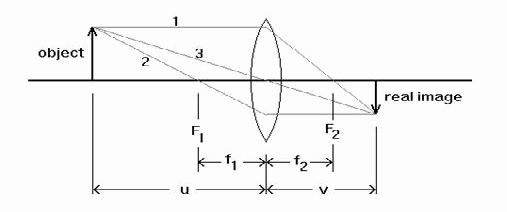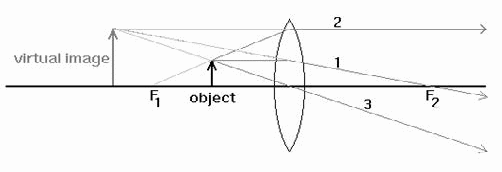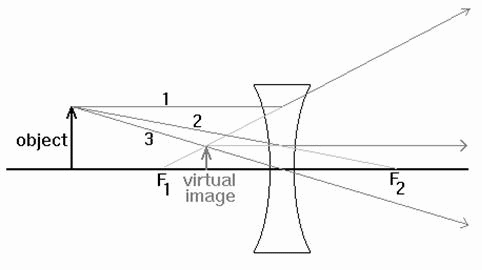Convergent Lens

Figure 1 Real Image formation by a Convergent Lens
A convergent lens has two foci, F 1 and F 2 ,located on its axis. These will lie on the lens axis at a common distance form the lens. The distance from the focal points to the lens centre is labelled f , and is defined as positive for convergent lenses. There are 3 principal rays that are easy to track in order to figure out the position and size of an object’simage (refer to Fig. 2):
1. Parallel Ray: A ray parallel to the axis on the incident side passes through the focus on the other side.
2. Focal Ray: A ray through the focus on the incident side,emerges parallel.
3. Centre Ray: A ray directed towards the centre of the lens onthe incident side emerges undeflected.
If the rays originating in an object point actually converge on an image point, so that they could be received on a screen, the image is called real (Fig. 1). If the rays do not actually converge but appear to come from the image point, the image is called virtual (Fig. 2).

Figure 2 Virtual Image Formation by Convergent Lens
Divergent Lens

Figure 3 Virtual Image formation by Divergent Lens
A divergent lens also has two foci, F 1 and F 2 ,located on its axis. They have a common distance f from its center, only now f is defined to be negative. The three principal rays are as follows (Fig. 4):
1. Parallel Ray: A ray parallel to the axis incident from the leftside, emerges as thought it was coming from the focus F1.
2. Focal Ray: A ray incident from the left heading for focus F2emerges parallel.
3. Centre Ray: A ray incident towards the centre emerges undeflected.
